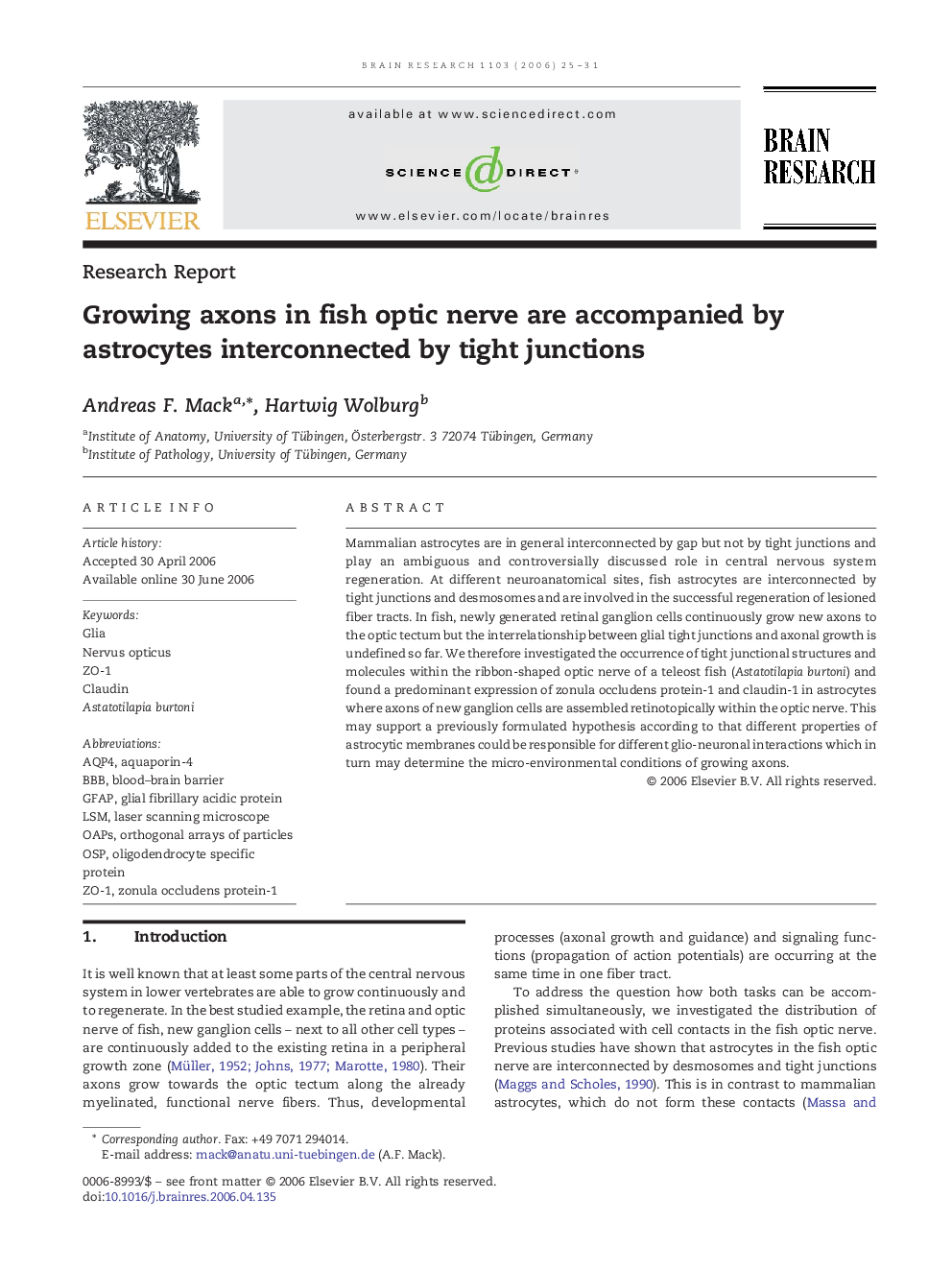| Article ID | Journal | Published Year | Pages | File Type |
|---|---|---|---|---|
| 4332556 | Brain Research | 2006 | 7 Pages |
Abstract
Mammalian astrocytes are in general interconnected by gap but not by tight junctions and play an ambiguous and controversially discussed role in central nervous system regeneration. At different neuroanatomical sites, fish astrocytes are interconnected by tight junctions and desmosomes and are involved in the successful regeneration of lesioned fiber tracts. In fish, newly generated retinal ganglion cells continuously grow new axons to the optic tectum but the interrelationship between glial tight junctions and axonal growth is undefined so far. We therefore investigated the occurrence of tight junctional structures and molecules within the ribbon-shaped optic nerve of a teleost fish (Astatotilapia burtoni) and found a predominant expression of zonula occludens protein-1 and claudin-1 in astrocytes where axons of new ganglion cells are assembled retinotopically within the optic nerve. This may support a previously formulated hypothesis according to that different properties of astrocytic membranes could be responsible for different glio-neuronal interactions which in turn may determine the micro-environmental conditions of growing axons.
Keywords
Related Topics
Life Sciences
Neuroscience
Neuroscience (General)
Authors
Andreas F. Mack, Hartwig Wolburg,
